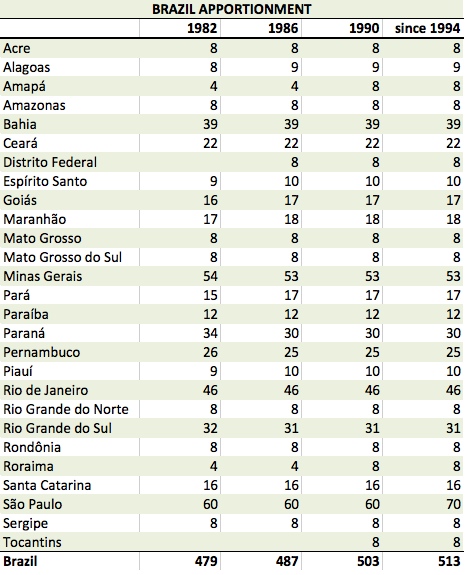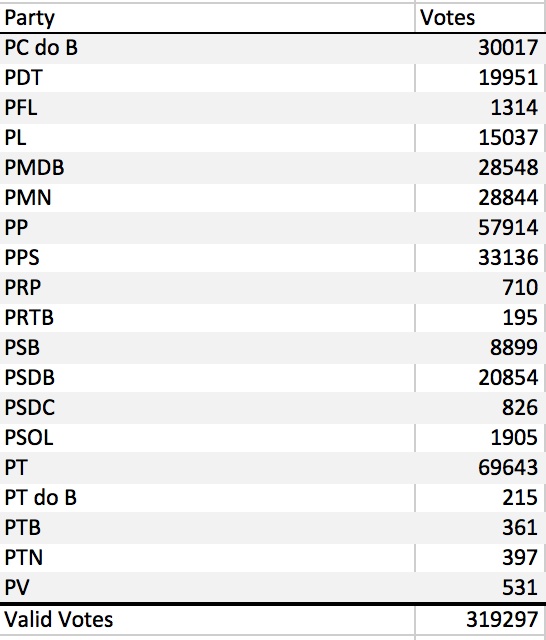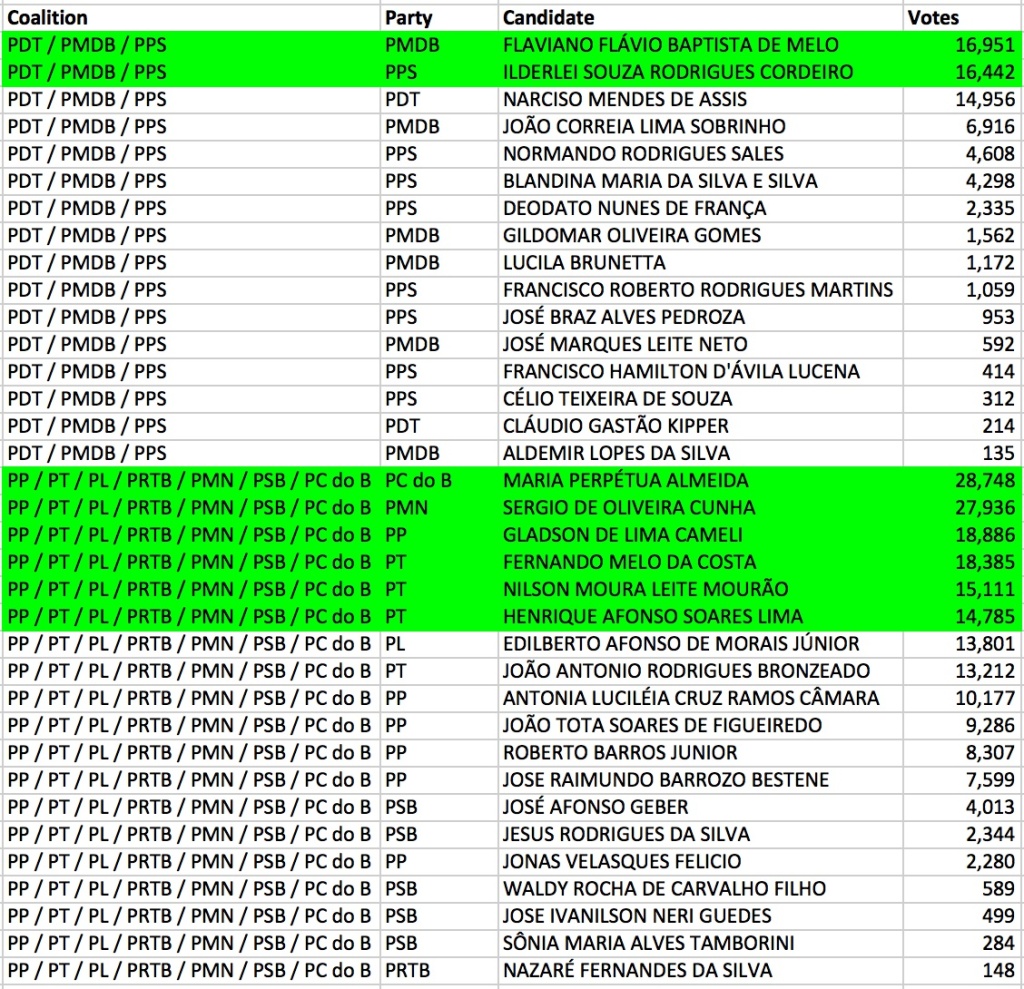Brazilian voters cast their Chamber of Deputies (Câmara dos Deputados) ballot by entering a numerical code on a keypad for either an individual candidate or political party. The great majority of voters choose to vote for a candidate. All votes for a candidate count towards the total for their party.
The federal units—states and the federal district—serve as constituencies. Currently, no state may have fewer than 8 deputies or more than 70 deputies. The maximum limit only constrains the representation of São Paulo but many states benefit from the minimum. The following table shows the apportionment of seats to the states:
 Parties can form apparentements, or electoral coalitions. Brazil utilizes the d’Hondt system of proportional representation to allocate seats in constituencies to electoral coalitions based on the total votes cast for all parties in the coalition. (Technically, seats are allocated first for multiples of full Hare quotas with the remainder by d’Hondt but the result is the same.) Seats are also distributed to parties running alone and independents. The minimum threshold to qualify to receive any seats is a full Hare quota—the number of valid votes divided by mandates.
Parties can form apparentements, or electoral coalitions. Brazil utilizes the d’Hondt system of proportional representation to allocate seats in constituencies to electoral coalitions based on the total votes cast for all parties in the coalition. (Technically, seats are allocated first for multiples of full Hare quotas with the remainder by d’Hondt but the result is the same.) Seats are also distributed to parties running alone and independents. The minimum threshold to qualify to receive any seats is a full Hare quota—the number of valid votes divided by mandates.
Seats are then allocated to individual candidates within an electoral coalition or political party in descending order of the number of candidate (i.e. preference) votes received for all candidates within the coalition or party. Seats are not allocated proportionately to parties within an electoral coalition but strictly in the order of candidates votes gained without regard to party.
The following example shows how Acre’s 8 seats were allocated in 2006. First, here are the total votes received by all parties:
 The next step was to total the number of votes received by each electoral coalition or party running alone, as shown in the second column below. Only two coalitions received more votes than a full Hare quota—valid votes divided by the 8 available seats—shown in the last row. The third column reveals the multiples of the Hare quota gained by these coalitions and the fourth column shows the number of full Hare quotas and seats initially received by these coalitions.
The next step was to total the number of votes received by each electoral coalition or party running alone, as shown in the second column below. Only two coalitions received more votes than a full Hare quota—valid votes divided by the 8 available seats—shown in the last row. The third column reveals the multiples of the Hare quota gained by these coalitions and the fourth column shows the number of full Hare quotas and seats initially received by these coalitions.
As only seven seats have been distributed, one remains to be allocated through the d’Hondt method. The fifth column presents the d’Hondt quotas—votes divided by the number of seats already received plus one—for the two eligible coalitions. The second coalition had the higher quota so it received the final seat.
In order to determine which candidates receive the seats, one must examine the candidate votes gained by candidates who are affiliated with the two coalitions. The following table shows the candidates for each coalition in descending order of candidate votes. The candidates highlighted in green were elected. Note that the PT, which received the most votes of any party in its coalition, did not gain any seats until the fourth coalition seat was allocated because candidates from other parties received more votes than any PT candidate. The PP, which received far more votes than the PMN or PC do B, won its seat after the PMN and PC do B because candidates from these two parties won more votes than any PP candidate.


